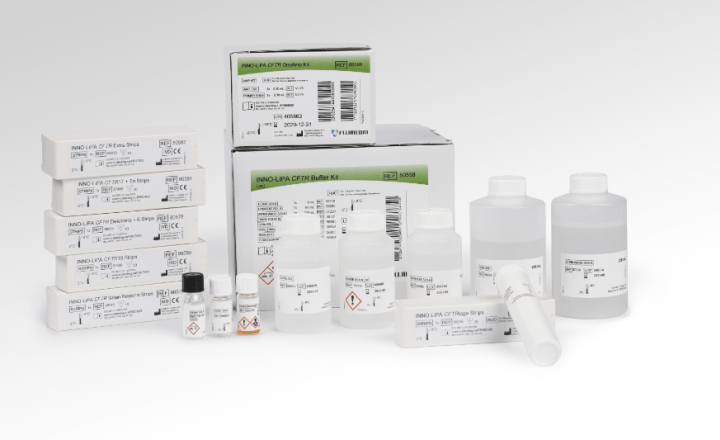Cystic Fibrosis, diagnosis and molecular testing
Cystic fibrosis (CF) is one of the most frequent human genetic disorders, predominantly affecting individuals of Caucasian descent in North America and Europe.
With about 1 in 25 persons carrying the autosomal recessive genetic mutation responsible for this potentially life-threatening condition, it is no surprise that the disease occurs with a frequency of 1 in every 2500-3000 live births.
Cystic fibrosis is caused by mutations in the Cystic Fibrosis Transmembrane conductance Regulatory (CFTR) gene, which is located on the long arm of chromosome 7.
This genetic abnormality causes defective chloride transport across cell membranes, leading to the formation of thick, viscous mucus gland secretions (hence the alternative name for the disease: mucoviscidosis).
These sticky secretions clog the ducts of various glands, especially those of the pancreas and lungs, giving rise to pancreatic insufficiency and repeated respiratory tract infections which, together with salty sweat, are the hallmarks of the classical presentation of the disease.
Diagnosis of CF
The telltale signs and symptoms of CF are typically observed first in neonates or young children.
Early diagnosis of CF will trigger close follow-up and fast implementation of a selected treatment and nutrition program to prevent irreversible tissue damage.
This is an essential factor which determines the quality of life and the life expectancy of the CF patient.
Already within 24 hours after birth, some 15% of children present with meconium ileus (intestinal obstruction).
Others fail to gain weight and thrive, while a significant proportion of children develop increasingly menacing respiratory symptoms.
These clinical presentations, along with the abnormal results of an immunoreactive trypsin (IRT) test, a pancreatitis associated protein (PAP) test, and/or sweat test, direct the physician towards a diagnosis.
However, the definitive diagnosis of CF is made upon genetic analysis of the CFTR gene.
Other diseases, which are clinically defined as atypical CF, are also associated with CFTR mutations.
Examples of these conditions are atypical asthma, bronchiectasis, pancreatitis, and male infertility caused by the congenital absence of the vas deferens (CBAVD).
A molecular analysis of the CFTR gene is recommended for purposes of differential diagnosis.
Genetic testing should always be offered along with appropriate genetic counseling.
Molecular Testing for CF
By the end of 2008, over 1600 CFTR mutations and more than 300 potential functionally important polymorphisms are known, associated with a wide range of disease states.
The mutations are unevenly distributed over the exons and introns of the CFTR gene.
In different populations, some mutations in the CFTR gene are much more common than others, reflecting population origin and ethnicity.
The most common mutation on the CFTR gene occurs at position 508, causing a phenylalanine molecule (termed F) to be lost from the CFTR amino acid sequence: hence the designation deltaF508.
This mutation leads to a non-functional, degraded mutant CFTR protein.
Genotype-phenotype correlation is not always easy to establish; genetic explanations are still being sought for different clinical manifestations in individuals with identical mutations, although the explanation may lie in an interplay of genetic, infectious, and environmental factors.
Other sites that contain useful information about CF are given below:
European Thematic Network for Cystic Fibrosis
http://www.cfnetwork.be
European Cystic Fibrosis Society (ECFS)
http://www.ecfs.eu
The American Society of Human Genetics
http://www.ashg.org
The European Society of Human Genetics
http://www.eshg.org
Belgian Association for Cystic Fibrosis (only in NL and F)
http://www.muco.be
WHO website
http://www.who.int/genomics/publications/en




